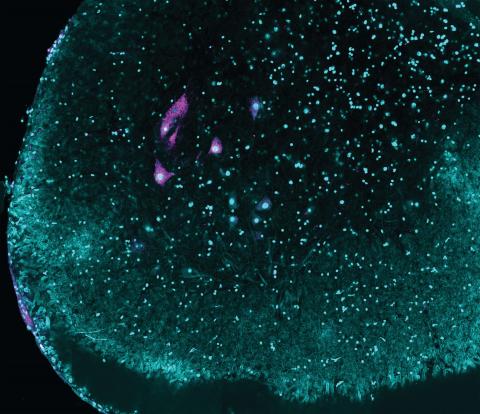This multi-institutional team uses unique knock-in animal models and human cell models of familial Amyotrophic Lateral Sclerosis (ALS) that may more accurately reflect why neurons lose function and die in this disease.
The team harnesses the strengths of four powerful model systems—worms, flies, mice, and human induced pluripotent stem cells—to develop a robust understanding of the early stage defects in ALS neurons that precede loss of motor control. This project will also identify conserved, cross-species suppressor genes whose perturbation could prevent ALS.
